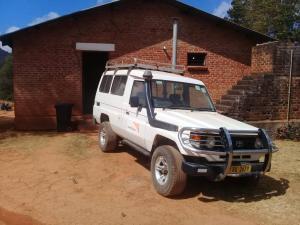
It’s 3pm on a sunny Thursday afternoon in Rumphi. A stretcher is wheeled into Mphompha Health Center, it is an emergency, certainly.
A 32-year-old woman is supposed to be home doing household chores supporting her family, but here she is gasping for a breath—her womb perforated, rotting and bleeding severely.

The clinician, hard at work and sweating profusely in the sweltering tobacco growing district in Northern Malawi, had to act swiftly to save the mother of two.
It is in the middle of the day when one Memory Jere in her ninth month of pregnancy starts experiencing labour pains and needs immediate medical attention for safe delivery.
The nearest health center where she has been going for antenatal care services for the past eight months of her pregnancy is Mphompha Health Centre in Rumphi.
With the aid of fellow villagers, Jere’s husband has no option but to transport his wife by ox-cart, the only available means of transport in the village at that moment, to the hospital for safe delivery.
But, upon reaching the health center, the husband is greeted by darkness and the Mphompha Health Center official refers them to Rumphi District Hospital. The wife continues bleeding severely.
With no ambulance available at the health center – the only one owned by the facility has been grounded for more than three months due to the vehicle’s battery fault and worn-out tyres – they are forced to embark on a 60 kilometer journey to Rumphi Boma using the same ox-cart which brought them here.
Transportation problems
Tucked in Senior Chief Mwankhunikila, the health centre is situated approximately forty kilometres away from Memory’s home and serves a population of 27,611 people from 252 villages.
According to Victor Ndagha Kaonga who is Resource Mobilization Coordinator for Bina Mphompha civilian community members, in 2016 World Vision Malawi (WVM) donated a land cruiser vehicle to Mphompha Health Center covering the neglected areas of Mphompha, Chinyoli in Rumphi and Luzi in Mzimba.
As time went by, the vehicle’s tyres worn-out similarly to its battery. Due to financial constraints to service the vehicle, the Mphompha Health Center opted to just park it. 
“In August this year as a member of Bina Mphompha – civilian community members, I made a plea to fellow friends that we need to make contributions to put this vehicle back on the road.
“The response towards the plight has been favorable. So far we have managed to buy four tyres and a battery to the tune of K550, 000.00 (Five hundred fifty thousand),” Kaonga said.
WVM North Zonal Manager, Lamech Chimphero, said the organisation donated the vehicle to serve an area where they had a 15-year project that phased out in 2013.
Tale of Rumphi District Health Office
Rumphi District Health Office is struggling to provide health care services in time due to shortage of ambulances for referral cases from its health centres.
The principal administrator, Yohane Bilesi, said the district is relying on three ambulances instead of five, which has left some pockets of the district not served.
“Currently we have three ambulances. One is serving Hewe, the other one is serving the lakeshore areas and Livingstonia and the last one is at the district hospital.
“But as a DHO, we need five. The Henga Valley and Mphompha need ambulances as well. Lack of ambulances in the areas has led to avoidable deaths,” said Bilesi.















The picture is showing a World Vision vehicle.
The writer is a genius just by reading through his style of writing.